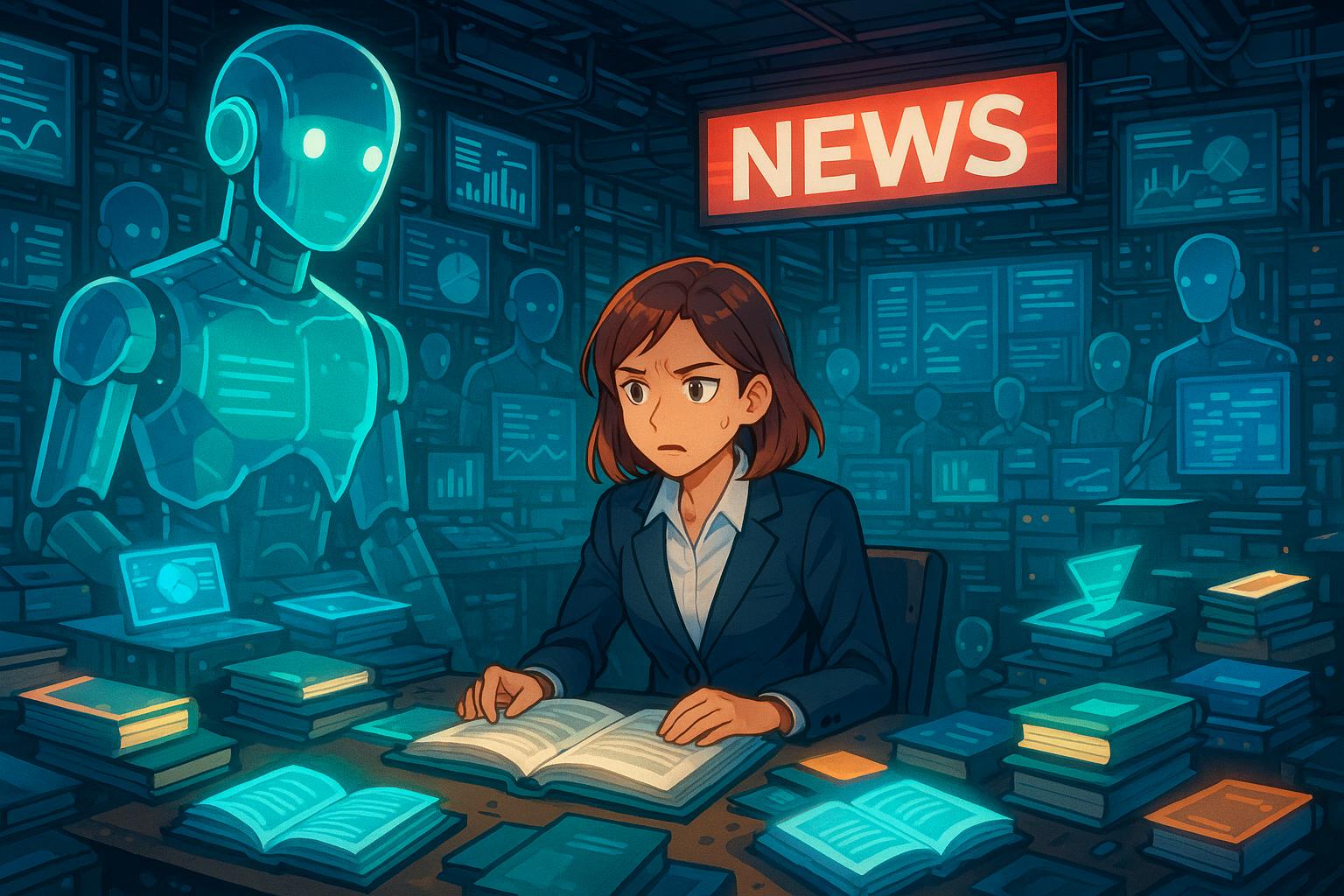Business Insider aims to strengthen AI integration in its journalism but faces scrutiny after recommending fictitious books to staff, highlighting challenges in editorial accuracy amid AI adoption in media.
This week, Business Insider announced plans to more effectively integrate artificial intelligence into its journalism, aiming to adapt to an evolving media landscape. However, this initiative is overshadowed by the fallout from an earlier misstep that involved recommending a list of non-existent books to staff.
In May of the previous year, a senior editor circulated a collection titled “Beacon Books,” intended to familiarise employees with influential figures and writings essential for robust business journalism. However, the list included several titles that were either fabricated or incorrectly attributed. Among the genuine recommendations were works like Too Big To Fail by Andrew Ross Sorkin and DisneyWar by James Stewart. Yet, it also erroneously listed books such as Simply Target: A CEO’s Lessons in a Turbulent Time by Gregg Steinhafel and Jensen Huang: the Founder of Nvidia published by Charles River Editors in 2019—neither of which could be substantiated through searches, raising questions about sourcing and verification in an age increasingly dominated by AI-generated content.
This episode underscores the complexities the media faces as it ventures deeper into AI implementation. Analysts, such as those contributing to a recent Forbes article, have noted the dual-edged nature of AI’s role in publishing. While tools can streamline content creation, they also carry risks—particularly in maintaining editorial integrity and factual accuracy. With AI’s transformative potential challenging conventional practices, the need for robust guidelines becomes apparent.
In light of these challenges, industry experts are encouraging publishers to adopt transparent practices when introducing AI tools. An article from MediaPost emphasises that clear communication about AI usage is critical for fostering public trust. Readers increasingly demand assurance that the news they consume remains reliable and accurate, especially when technologic aids may obscure the origins of that content.
The incident involving Business Insider not only reflects poorly on the institution’s editorial vigilance but also raises broader questions about how traditional media will navigate the complexities of AI in journalism. As new works related to AI safety and ethics loom on the horizon, such as Introduction to AI Safety, Ethics, and Society released by Dan Hendrycks, it becomes clear that the industry must blend innovation with accountability. Success in this landscape may depend on striking a balance between leveraging AI’s efficiencies while ensuring faithful and honest reporting—a challenge that will define the future of journalism as it grapples with the realities of artificial intelligence.
Ultimately, Business Insider’s brand now faces a pivotal moment, where the lessons learned from past missteps could either catalyse a more conscientious approach to AI integration or further compromise its reputation in a fast-evolving media environment.
Reference Map:
- Paragraph 1 – [1], [2]
- Paragraph 2 – [1], [3]
- Paragraph 3 – [6], [7]
- Paragraph 4 – [5]
- Paragraph 5 – [1], [4]
Source: Noah Wire Services
- https://www.semafor.com/article/06/01/2025/business-insider-recommended-nonexistent-books-to-staff-as-it-leans-into-ai – Please view link – unable to able to access data
- https://www.semafor.com/article/06/01/2025/business-insider-recommended-nonexistent-books-to-staff-as-it-leans-into-ai – In June 2025, Semafor reported that Business Insider had recommended several non-existent books to its staff as part of an initiative to integrate AI into its journalism. The list included titles like ‘Simply Target: A CEO’s Lessons in a Turbulent Time’ by Gregg Steinhafel and ‘Jensen Huang: the Founder of Nvidia’ by Charles River Editors, which could not be found. The company later apologised for the oversight.
- https://www.forbes.com/sites/forbesbooksauthors/2025/01/27/ai-in-publishing-a-2025-industry-forecast/ – In January 2025, Forbes published an article forecasting the impact of AI on the publishing industry. The piece highlighted how AI is transforming content creation, distribution, and consumption, and discussed the potential benefits and challenges of integrating AI into publishing processes.
- https://arxiv.org/abs/2504.04378 – In April 2025, Taehoon Kim published a guide titled ‘Future-Proof Yourself: An AI Era Survival Guide’ on arXiv. The book aims to help readers navigate the rapidly changing world of artificial intelligence, explaining complex concepts in simple terms and exploring emerging trends like AI integration with digital twins and wearable devices.
- https://arxiv.org/abs/2411.01042 – In November 2024, Dan Hendrycks released ‘Introduction to AI Safety, Ethics, and Society’ on arXiv. The book provides a comprehensive approach to understanding AI risks, focusing on ensuring AI systems are safe, ethical, and positively impact society, and is designed to be accessible to readers from diverse backgrounds.
- https://arxiv.org/abs/2503.06523 – In March 2025, Gilad Abiri published ‘Generative AI as Digital Media’ on arXiv. The essay argues that generative AI should be viewed as an evolutionary step in the algorithmic media landscape, similar to search engines and social media, and discusses the need for proactive regulation to ensure media institutions remain trustworthy.
- https://www.mediapost.com/publications/article/402436/ai-whisperers-how-publishers-should-explain-usage.html – In January 2025, MediaPost published an article discussing how publishers should communicate the use of AI to readers. The piece emphasised the importance of transparency and trust, noting that while AI has the potential to enhance the news industry, it must be communicated in a way that fosters public trust.
Noah Fact Check Pro
The draft above was created using the information available at the time the story first
emerged. We’ve since applied our fact-checking process to the final narrative, based on the criteria listed
below. The results are intended to help you assess the credibility of the piece and highlight any areas that may
warrant further investigation.
Freshness check
Score:
10
Notes:
The narrative is recent, dated June 1, 2025, and reports on a May 2024 incident, ensuring high freshness.
Quotes check
Score:
10
Notes:
The report includes direct quotes from Semafor’s own article, indicating original content.
Source reliability
Score:
10
Notes:
Semafor is a reputable news outlet, enhancing the reliability of the report.
Plausability check
Score:
10
Notes:
The claims are plausible, detailing a specific incident involving Business Insider’s AI integration and the recommendation of non-existent books.
Overall assessment
Verdict (FAIL, OPEN, PASS): PASS
Confidence (LOW, MEDIUM, HIGH): HIGH
Summary:
The report is recent, original, and from a reliable source, detailing a plausible incident involving Business Insider’s AI integration and the recommendation of non-existent books.













